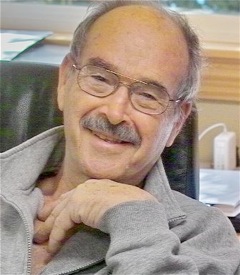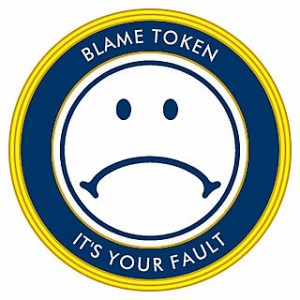
Some people mumble or talk too quietly for the listener to hear what they’re trying to get across. While this is obviously not an effective way to communicate, some people do it routinely and often unconsciously.
It’s good to remember that communication is in what is received, not in what is transmitted. It’s also good to remember that communication is one of the easiest places to measure power. Listen with that in mind. Some people communicate in ways that show them to have too little power while some people show themselves to inappropriately use too much power. Effective communicators inspire with their balanced and responsive use of power. That power translates into having a strong influence on the flow of the conversation and being listened to well.
In communicating verbally with someone, strive to be heard effectively. Now, that is such simple and even superficial advice but let me share a secret. It’s magic. Here’s how:
If you can hold and sustain the intention to consciously speak in such a way that your listener can hear and understand every syllable of every word, and you can consciously hold yourself accountable to live up to carrying out that intention every time you speak, you will find that you will soon start to think in more effective ways about what specific words to use to most accurately convey the meaning you want to get across. That’s power. Thus, by putting your attention on the mechanics of speaking, you will magically evolve your consciousness to have more alignment between what you want to say and what the other person understands. This is a path towards graciously strengthening your power. And as your power grows this way, you will be less inclined to give your power away by being non-assertive, co-dependent, vague about your needs, or being unconscious enough to be played for a sucker by the less scrupulous people in your world.
Improve what you can improve in yourself – that is, what is in your control – and who you are in the world evolves in ways that seem unrelated to what you improved.
Copyright © 2014 Jim Lehrman
 Being Here Now means creating every moment. Being the creator of your moments is the most spiritual level of responsibility. Recognizing yourself as the creator of your moments grounds you in the world & in yourself. You miss the opportunity to create your moments if you simply indulge habitual ways of responding to the circumstances around you. Train yourself to stop overthinking; work to keep your mind empty – life, itself, will provide just enough to put there for you to work constructively and creatively with. If you want to be spiritual, start at square one: be the conscious creator of your experience, moment by moment. To elevate spiritually, practice witnessing yourself in the act of creation, moment by moment; witness without judgment or apprehension, but with the open-minded awe of a curious child. To go beyond the game of spiritual elevation, of hierarchy, be amused by what you see.
Being Here Now means creating every moment. Being the creator of your moments is the most spiritual level of responsibility. Recognizing yourself as the creator of your moments grounds you in the world & in yourself. You miss the opportunity to create your moments if you simply indulge habitual ways of responding to the circumstances around you. Train yourself to stop overthinking; work to keep your mind empty – life, itself, will provide just enough to put there for you to work constructively and creatively with. If you want to be spiritual, start at square one: be the conscious creator of your experience, moment by moment. To elevate spiritually, practice witnessing yourself in the act of creation, moment by moment; witness without judgment or apprehension, but with the open-minded awe of a curious child. To go beyond the game of spiritual elevation, of hierarchy, be amused by what you see.
Copyright © 2014 Jim Lehrman
 Freedom is the ability to respond to a situation in accord with what the situation calls for as if there is no issue. This doesn’t mean you have to have dropped your issues. It means you have to be able to separate yourself from your issues and from the identities which live within you which are fused with those issues.
Freedom is the ability to respond to a situation in accord with what the situation calls for as if there is no issue. This doesn’t mean you have to have dropped your issues. It means you have to be able to separate yourself from your issues and from the identities which live within you which are fused with those issues.
Your identities exist on the level of the story, the ever-changing foreground level of reality, which is where issues, triggers, automatic responses, dramas, feelings, impulses, etc exist. The witness exists on a level beyond the story, beyond issues, triggers, automatic responses, dramas, feelings, and even impulses.
Learn to be mindful; to notice your identities and your stories and how your identities get lost in the stories. Locate yourself in the never-changing background – the “witness” – from where you can see things for what they are and can separate yourself from everything that exists in the ever-changing foreground.
Copyright © 2014 Jim Lehrman
 On the day after the birthday marking the start of my 60th year, I’m posting a eulogy. It is for someone who is among the most influential people in my life – Ron Kurtz, who was a master synthesizer and master therapist; the creator of Hakomi Body-Centered Psychotherapy. He passed away on January 4th. This is what I wrote and posted at the website for the United States Association for Body Psychotherapy.
On the day after the birthday marking the start of my 60th year, I’m posting a eulogy. It is for someone who is among the most influential people in my life – Ron Kurtz, who was a master synthesizer and master therapist; the creator of Hakomi Body-Centered Psychotherapy. He passed away on January 4th. This is what I wrote and posted at the website for the United States Association for Body Psychotherapy.
Discovering this website today, months after his passing, I am moved to write to Ron as if he’s still present. Yes, still present – like Milton Erickson, who’s ‘voice goes with you’, Ron is the laughing coyote ever in my consciousness – and sometimes in my conscience… Ron, you’ve been with me through the decades and my value of that has not diminished. As a mentor, thank you for the principles, the teaching, and the inspiration. Thank you for so many opportunities you provided to me and the gifts you have bestowed upon me. Professionally, you renewed my faith in the therapeutic endeavor and you gave me a path to both follow and build upon. Thank you for the direction that your own curiosity provided. (As you were fond of saying, “follow me boys, I’m sure it’s here somewhere”.) As a friend, thank you for the dance of intimacy that covered such a wide spectrum of context and emotion. It’s been a pleasure to share life with you. Thank you for Colorado, Connecticut, Massachusetts (Interface), Arizona, New York (Omega), and the Northwest – living in community and building everything from ideas to systems to organization to legitimacy to family. Thank you for your role, 25 years ago, in bringing into my life the person who is my life partner – that was 10 years after our first conflict, which was over a woman! And thank you for our playful years of being new fathers together. Thank you for the push-pull, in-&-out challenges that we threw each others’ way (I think I’ve negotiated more – both with you and for you – than I have with anyone) and for the support we laid out for each other, keeping us in the game. I’m sorry that life is so short. Thank you for making it sweeter. I’m missing you.
Copyright © 2014 Jim Lehrman
It’s been several months since I posted my last blog. That timing coincides with when I started traveling before the start of summer. I’m still out and about, indulging in various adventures and, while I haven’t been blogging, I’ve been posting about 3 or 4 tweets a day on Twitter.
I used to not like Twitter – I didn’t care to be as informed as it enabled me to be about the details of activities of the people I was following. But when I started tweeting, myself, I discovered it was a more effective way to wake people up. And I discovered writing the sort of tweets I write triggered a sort of endorphin high. Getting big ideas down to 140 characters or less became an art form, a dance with words.
I think you’ll find that reading them is like an interactive dance wherein, reading one at a time, you can get very present, go inside, and engage consciously with what it points your attention to. In this sense, they are a bit like an Oracle, offering you a window which provides insight into yourself, your life, your choices, your ability to choose. They invite you to be honest with yourself – intimately honest – and to consider making adjustments to be more in alignment with who you want to be, what you want in your inner experience and outer life, and how you want to effect the world.
Please consider following me on Twitter. Just press the Twitter button on my website or go to http://twitter.com/#!/jimlehrman. And I welcome your comments here, as well.
Here are the tweets I’ve done so far:
Could it be that every individual has a mystical part of them, an adventuring part, and an enlightened one, clouded at times by neurosis?
Ponder this for triple the amount of time you’d like to: In what ways is your vulnerability more of a blessing than a curse?
Are you “working” at having fun? Fun is more a function of attitude than of activity. Lighten up & take responsibility for what you bring.
While the names faces themes & clubs u formally or informally belong 2 can change, are your patterns staying the same? Where are u taking u?
Make space for wonder in ur life & in the lives of others. Recognize when it occurs in you or others. Stay with it. Cherish those moments.
Treat your insights with respect; explore if & how to translate them into action & into results that honor the significance of the insight.
It is valuable to be aware what your virtues are. (eg respectful, generous, fun) They are resources. Explore who these virtuous selves are.
Read More →
 With smells of honeysuckle and juniper lofting over the pungent spring mud, a woman is walking her dog down a quiet country road as the day starts to wane. Happy to be taking in the spacious feel of the outdoors, together they stroll past trees and fields, connected by 6 feet of leash and a shared appreciation for the scents, sights, and sounds of the lush green world at the edge of their neighborhood.
With smells of honeysuckle and juniper lofting over the pungent spring mud, a woman is walking her dog down a quiet country road as the day starts to wane. Happy to be taking in the spacious feel of the outdoors, together they stroll past trees and fields, connected by 6 feet of leash and a shared appreciation for the scents, sights, and sounds of the lush green world at the edge of their neighborhood.
They come along a shaded house by the side of the lane, and both of them glance over to see two dogs bolting out a screen door, racing towards them with growls, barks, and teeth exposed. With shock and terror, the woman doesn’t know whether to run or stand firm. Her dog is too big to lift and too old to fight. There is a noisy stand-off, canine threats from both sides, and in no time, a short dog fight.
Just as the woman can pull her dog away, a man comes out of the house and stands on the porch with his arms folded in a defensive manner. Look here https://chwilowkionline247.pl/sms-kredyt to find more information right now. The two unleashed dogs run back to the house and stand by their master. The man continues to stand with his arms crossed, defiantly.
The woman’s emotions are raw. Catching her breath, she notices her impulse to scream at this man, to beat him down with her indignance. She wants to hold him accountable, to make it clear that she is the good person who had her dog on a leash and that he is simply a bad person. The urge to blame this person and make him wrong is overwhelming.
She decided to not indulge the urge. Instead, she stood there holding onto her dog’s leash, as the two people stared at each other. She did shout out, but what came from her was “I’m so glad you came out”, and she said it with real appreciation. His response was a simple “You’re welcome. If I’d known it was happening I would have come out sooner.”
In each of us is an immense capacity to blame. It takes a high level of emotional intelligence to see the impulse to indulge situations where that capacity wants to be indulged. Some situations make it easy to find who was at fault and to use that person – and that story – as the focal point of our need to both make convenient sense of the situation and give the emotions a place to treat as their target.
A step in emotional growth is to notice the seductive pull to channel emotions into the blame game. Even when there IS someone at fault and the story lends itself to blame, you can observe the part of you that wants to indulge the opportunity to blame; you can question if this part of you wants something akin to healing or something akin to revenge. Accountability leads to healing whereas blame does not.
Much healing comes from taking responsibility for the meaning we place on the experiences we have. While someone else really might be to “blame” for what happened, it is we, ourselves, who create the world that we experience, triggered by events out there. We create the perceptions, emotional floodings or shut downs, and contractive or explosive responses.
Whenever blame gets triggered in you, it is an opportunity to examine what you use to come up with the meaning you applied to the situation and to explore who this part of you is who wants to indulge the passive aggressive endeavor of blame.
Copyright © 2014 Jim Lehrman
 One way I like to give people an ecstatic experience is with a couple of simple seemingly innocuous questions. They are the sort of questions you’d ask a very young child, yet they serve to deepen our perspective of reality.
One way I like to give people an ecstatic experience is with a couple of simple seemingly innocuous questions. They are the sort of questions you’d ask a very young child, yet they serve to deepen our perspective of reality.
I start by standing outdoors with the person and asking, “where does the sky begin?” There are a few answers I typically get, but the answer I’m looking for is “at my feet”.
Then I ask “where does the environment start?” The most common answer, given as a follow up to the first one, is “at my skin”, to which I supportively say that that’s correct, but only if your point of reference is at the edge of your skin; only if your experience of being in the world starts at the edge of your body. And, while we live in the world, on a deeper and more accurate level, we live in our experience. You can click here to find more detailed information.
Sure, you can notice the leaves swaying in the breeze, can feel that same breeze against your skin, and notice the song being sung by the nearby bird, and you can take all that in with awareness and even appreciation of the beauty of the environment. But you can also notice the flow of your breath, the sinking or rising feeling that comes over you emotionally, and the thoughts of wonder or of conviction which seem to blow in and out of your mind like the breeze. These are events that are happening, just like the wind and the birds “out there”.
There are two levels of “insufficient awareness” which can keep you from being fully present to your environment. The first is to not even be aware of the elements going on in your experience. I call this being “lost to the experience”. Walking next to a building that is on fire and not noticing it, or having a surge of anger and not noticing it are examples of being lost TO the experience. In both cases, the person is out of touch with what is going on in his or her environment, regardless of which side of the skin it’s happening on.
The second is to be aware but to over-identify with them. I call this being “lost in the experience”. Taking home a puppy being given away when you don’t have room, or indulging a surge of anger like a surfer on a wave are examples of being lost IN the experience.
But imagine you are able to notice – as it arises – the impulse to take home that puppy, or the surge of anger demanding to be indulged. If you can notice those inner elements of your experience, then your point of reference for what is happening around you is no longer at the edge of your skin but at the edge of your attention.
Imagine noticing your thoughts, shifts of emotion, sensations – all being experienced as simply more of the stuff “out there”. The flow of your experience is… noticing the airplane in the sky, noticing the tightness in your belly, noticing the thought arising “I wonder what I’ll have for lunch”, noticing the smell of the nearby creosote bush, noticing the memory return of a rainstorm a year ago… These are all events, some of which are located out there, some located not out there.
If your point of reference, if where you locate YOURSELF, is at the point from which your attention moves from object to object, then the environment starts at the edge of your attention, not at the edge of your body.
It may be paradoxical but it’s true, that we tend to respond more objectively, effectively, and compassionately to the things we think need attention in the environment around us than to the things that happen inside us. Thus, this shift of perspective may help you treat yourself as well as you treat the world around you.
To the extent that you can allow yourself to engage with the events that unfold in your inner experience as consciously, autonomously, and either responsively or equanimously as you engage with the events that occur “out there”, you are that much more in the natural flow of life and that much more fully taking in the experience of it.
Try this: Take a handful of minutes to sit and allow yourself to notice whatever happens to come into your attention. Regardless of whether your attention is on something from inside you or from something “out there”, acknowledge each thing you notice as simply being more “stuff”. Take it slow, and do this with an awareness of the distinction between the observer and what is observed, between you and not you. Whatever is in your attention is in the environment – you are the observer and whatever is in your attention is not you. This observing “you” is the only thing NOT in the environment. If you keep up this practice over time, your skills of attention will sharpen, and more and more of this observing “you” will become part of the environment. The more “you” disappear, the more spacious your experience becomes.
Copyright © 2014 Jim Lehrman
 Do you notice the ebb and flow of your emotions? The gravitation towards some feelings and the aversion to others? Hopefully, you know where you stand on the gamut of emotions – what your most and least favored feelings are. Faith is a force that we don’t often think of as being an emotion, but it is a “felt experience” as much as is fear.
Do you notice the ebb and flow of your emotions? The gravitation towards some feelings and the aversion to others? Hopefully, you know where you stand on the gamut of emotions – what your most and least favored feelings are. Faith is a force that we don’t often think of as being an emotion, but it is a “felt experience” as much as is fear.
Faith and fear are two poles on a continuum. At any time you are at some point on that continuum between 100% faith and 100% fear.
When you notice an experience of fear it is good to notice where you are on the continuum. It is good to remember that your location changes a lot on this continuum, and that many factors influence the shifting location. A beneficial experiment is to pay close enough attention to your state – whether it be faith, fear, sadness, depression, anger, or anything – that you can notice your actual movement to the right or left on that state’s continuum.
It is also good to remember that neither faith nor fear exist “out there”. They don’t “appear in nature”. Faith and fear are what we create within us in response to some thing or situation out there.
Copyright © 2014 Jim Lehrman
 When I was in my 20s I learned of the man who tuned the great and grand pianos at Carnegie Hall. At his scheduled time, he would walk out of the world of Manhattan and into the stillness of this majestic theater, feeling secure in knowing that the entire hall would be empty. And he would sit, like a virtuoso, at the keyboard. In that spaciousness, he would take his time, listening to each string as he tapped on every key. It was an intimate conversation – a gentle touch here, a knowing turn there. Quietly, expertly, ever so focused, in his experience there was no passing of time. So “in the moment”, there was no hurrying and no indulging of distraction. He was so present to the task at hand that time, itself, was merely a concept constructed elsewhere, not even hinted at there in the hall of his patient ear and the pianos he tuned so perfectly.
When I was in my 20s I learned of the man who tuned the great and grand pianos at Carnegie Hall. At his scheduled time, he would walk out of the world of Manhattan and into the stillness of this majestic theater, feeling secure in knowing that the entire hall would be empty. And he would sit, like a virtuoso, at the keyboard. In that spaciousness, he would take his time, listening to each string as he tapped on every key. It was an intimate conversation – a gentle touch here, a knowing turn there. Quietly, expertly, ever so focused, in his experience there was no passing of time. So “in the moment”, there was no hurrying and no indulging of distraction. He was so present to the task at hand that time, itself, was merely a concept constructed elsewhere, not even hinted at there in the hall of his patient ear and the pianos he tuned so perfectly.
The last thing he would do, though, upon finishing a piano and assessing it as being in perfect tune, was to stand next to it, gently and respectfully close it’s lid, and slam his fist down on its lacquered surface as hard as he could, transforming its technical completion to an artistic statement.
 He would hear the strings sigh and ever-so-slightly stand at ease, and a small smile would come on his face, in recognition that too much perfection is, itself, out of balance in the flow of things, and therefore grating to the ears of the listener.
He would hear the strings sigh and ever-so-slightly stand at ease, and a small smile would come on his face, in recognition that too much perfection is, itself, out of balance in the flow of things, and therefore grating to the ears of the listener.
Perfection is like that – a fine goal when recognized as being simply a theoretical guideline which, in actual manifestation, is ofttimes a bit grating to the nerves.
And we are like that, too. We are each like those pianos, having the capacity to be tuned perfectly, but each of us having our own way of pushing our feet against the surface of perfection, like children being obstinate, our obstinance driven by a higher knowing, too deep to understand or recognize.
In childlike blindness, we sometimes indulge the yearning for perfection – driven by some antiquated belief in the salvation of someone’s approval, mythic as that is. Approval seems sweet, and as children we are drawn to it like candy. As adults, we can listen closely to our true nature, and can be like the piano tuner at Carnegie Hall, respectful and responsive to the tension our drives place on the natural beauty that is our unique sound. Oh, what harmonies we sacrifice in striving for perfection and it’s mythic embrace of approval.
Copyright © 2014 Jim Lehrman
 In my work I often get people to shift into an altered state of consciousness that could descriptively be referred to as “practical ecstasy”. Even working on the phone, my work is experiential and sometimes so focused as to get people stoned on their own in-the-moment experience. Practical ecstasy is a state of meta-presence which results from sustaining acute enough attention as to acess information of what is going on between the moments of normal awareness. Here is an exercise that helps people practice this deepening of attention. I recommend you do it with your eyes open. If you’re too distracted, or if the need to blink is frequent, do it with your eyes closed. Also, have a clock handy which is easy for you to see so you can time different part of this.
In my work I often get people to shift into an altered state of consciousness that could descriptively be referred to as “practical ecstasy”. Even working on the phone, my work is experiential and sometimes so focused as to get people stoned on their own in-the-moment experience. Practical ecstasy is a state of meta-presence which results from sustaining acute enough attention as to acess information of what is going on between the moments of normal awareness. Here is an exercise that helps people practice this deepening of attention. I recommend you do it with your eyes open. If you’re too distracted, or if the need to blink is frequent, do it with your eyes closed. Also, have a clock handy which is easy for you to see so you can time different part of this.
Before starting the exercise, take a minute to sit and get relaxed – but not too relaxed. Allow yourself a little time to get mindful. That is, tune in to your in-the-moment experience. Notice your body in your sitting position. Notice your breath and the particular ease and flow of it. Notice if your mind is busy or settled down. Simply notice and allow what happens to be so in your experience.
1. Now, sit quietly, uninterrupted, not speaking, and for one full minute, notice all the movements you make, with the exception of breath-related movements. Your legs, feet, head, arms, torso, hands, fingers, toes, eyes, lips – wherever there is any movement at all in you, simply notice.
2. Now, again, sit quietly, uninterrupted, not speaking, and for another full minute, sit but this time do not allow yourself to move any muscle in your body, again with the exception of breath-related movements. Don’t move your legs, feet, head, arms, torso, hands, fingers, toes, eyes, or lips. During this minute, track (notice) all the movement-related impulses that arise. That is, simply notice every individual desire to move any part of your body without indulging its impulse.
3. After that minute, take a few moments to feel any pent-up energy that is present in your body, then get up and move around a little, just to let that pent-up energy move and dissipate.
4. Now sit down again, and repeat that second step. Except – whenever you notice the desire or impulse to move any part of your body, go ahead and allow yourself to indulge that impulse after noticing it. Mindfully notice it BEFORE indulging it, and stay in your mindful state even as you consciously allow that individual movement to occur. Don’t over-indulge the impulse, though, and keep the movement that you indulge very simple and specific. Then go back to NOT moving so you can again track the next impulse to move, again consciously indulging each impulse after mindfully noticing it.
5. Now take one more minute, sitting quietly as with the previous steps, and allow yourself to move again as you did in the first step. Be in your natural flow, allowing whatever movements that want to happen to be carried out. But this time, see if you can notice each impulse to move BEFORE you make the movements. This is the level of mindfulness you want to maintain in the course of your day.
If you’re not working with me, I recommend you take a week or two to practice this exercise daily to develop more acute attention. Enjoy the ecstasy of being present!
Copyright © 2014 Jim Lehrman









